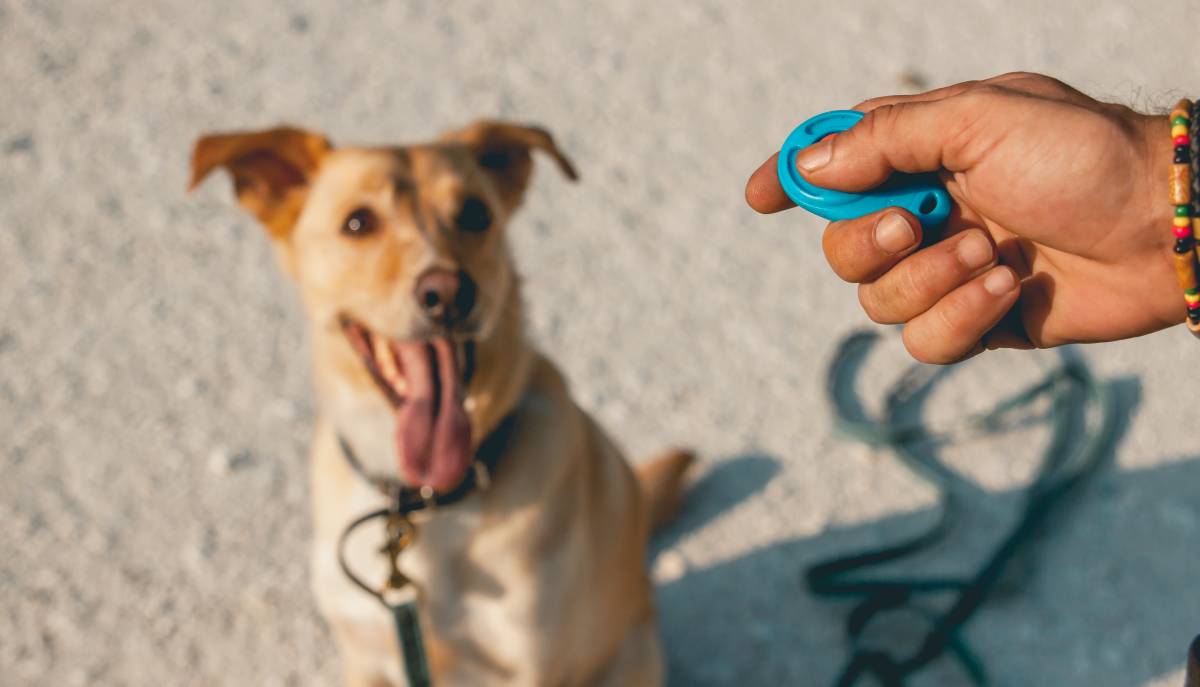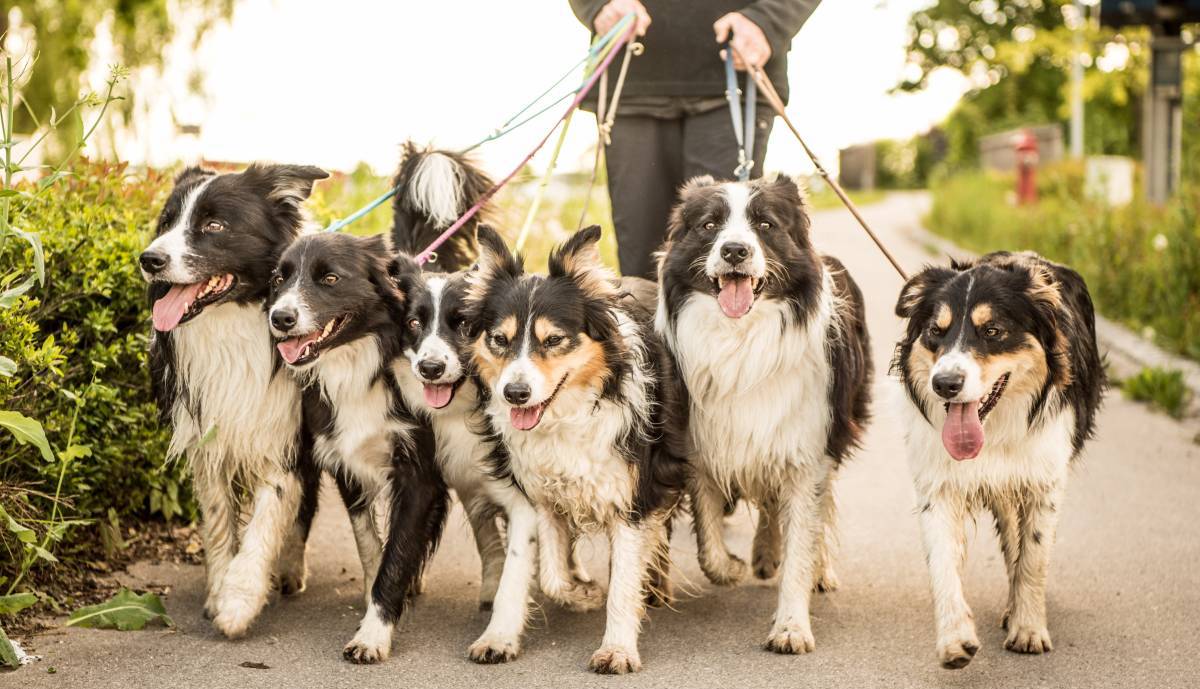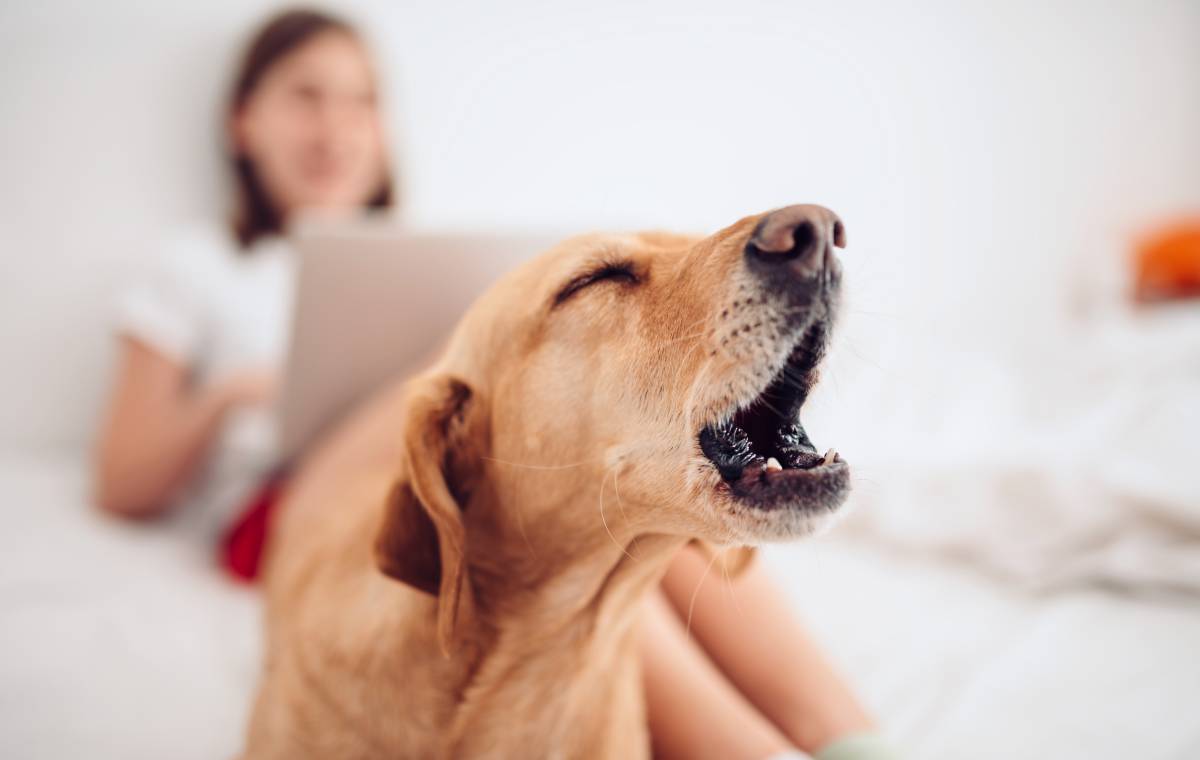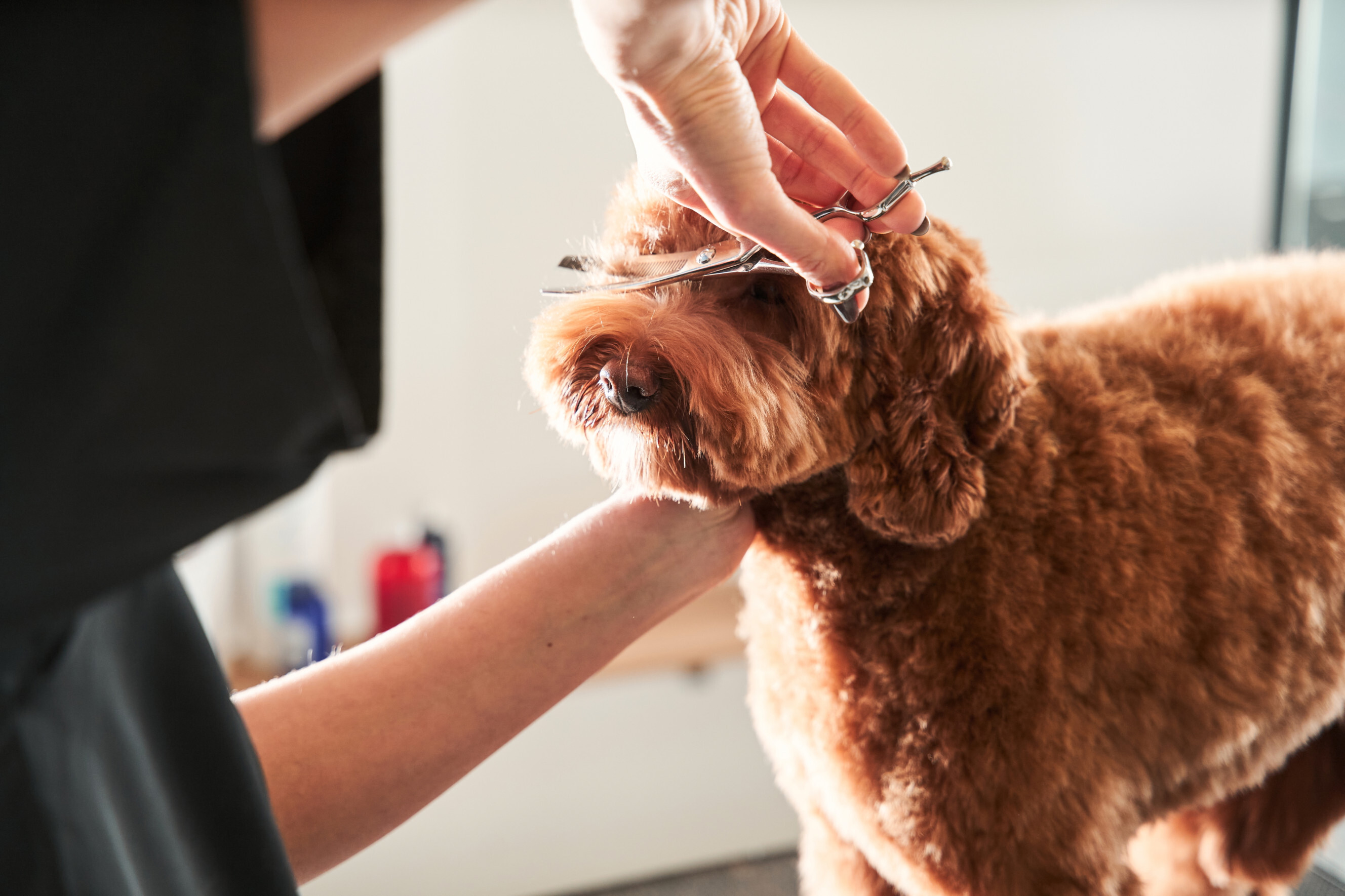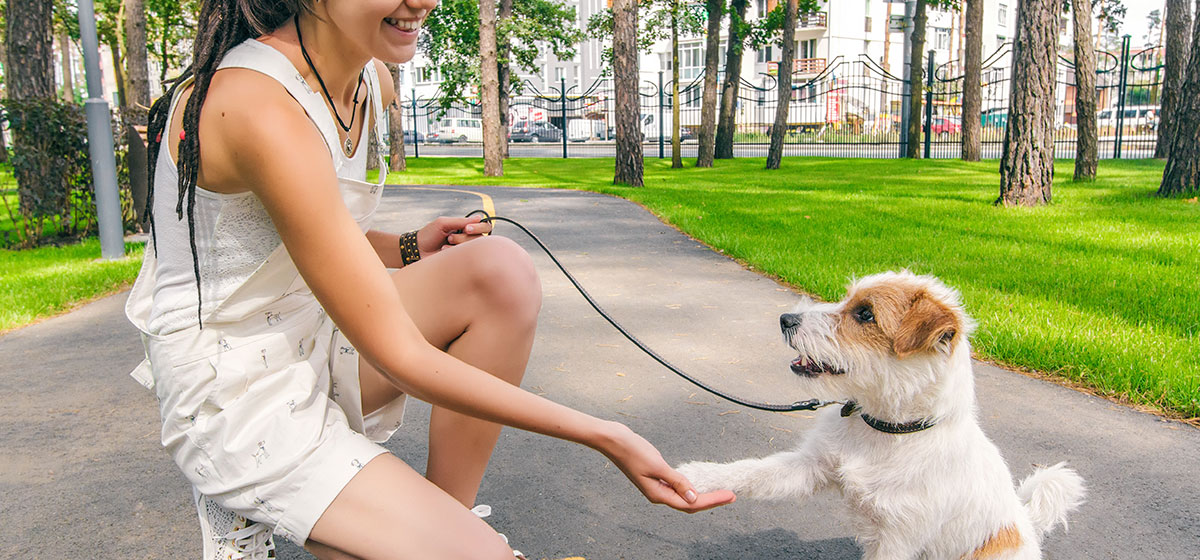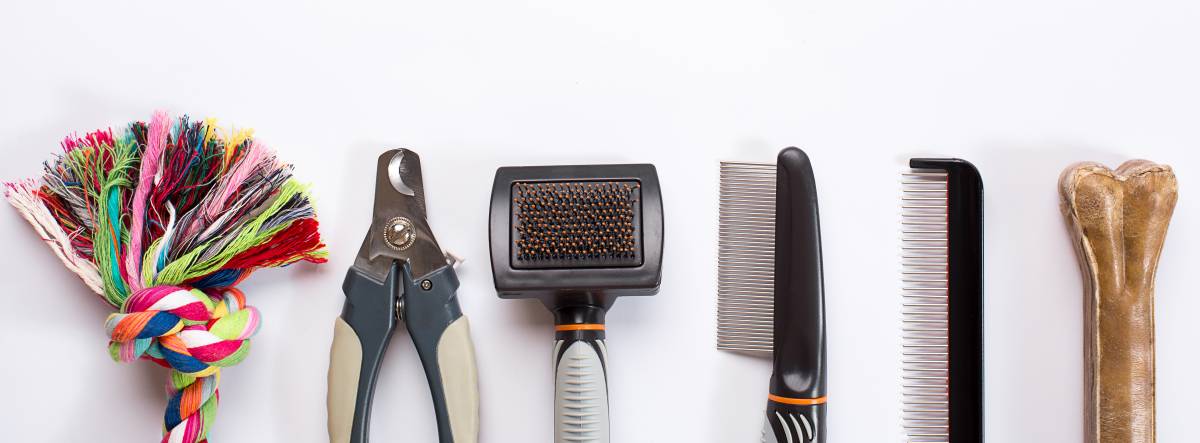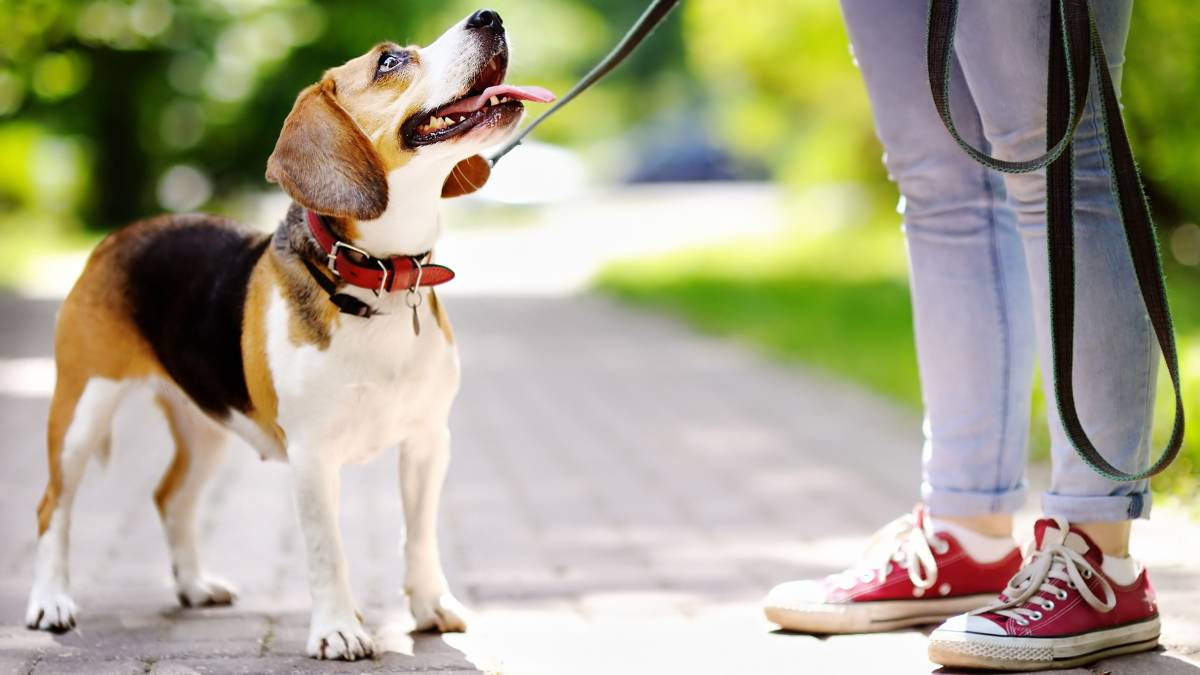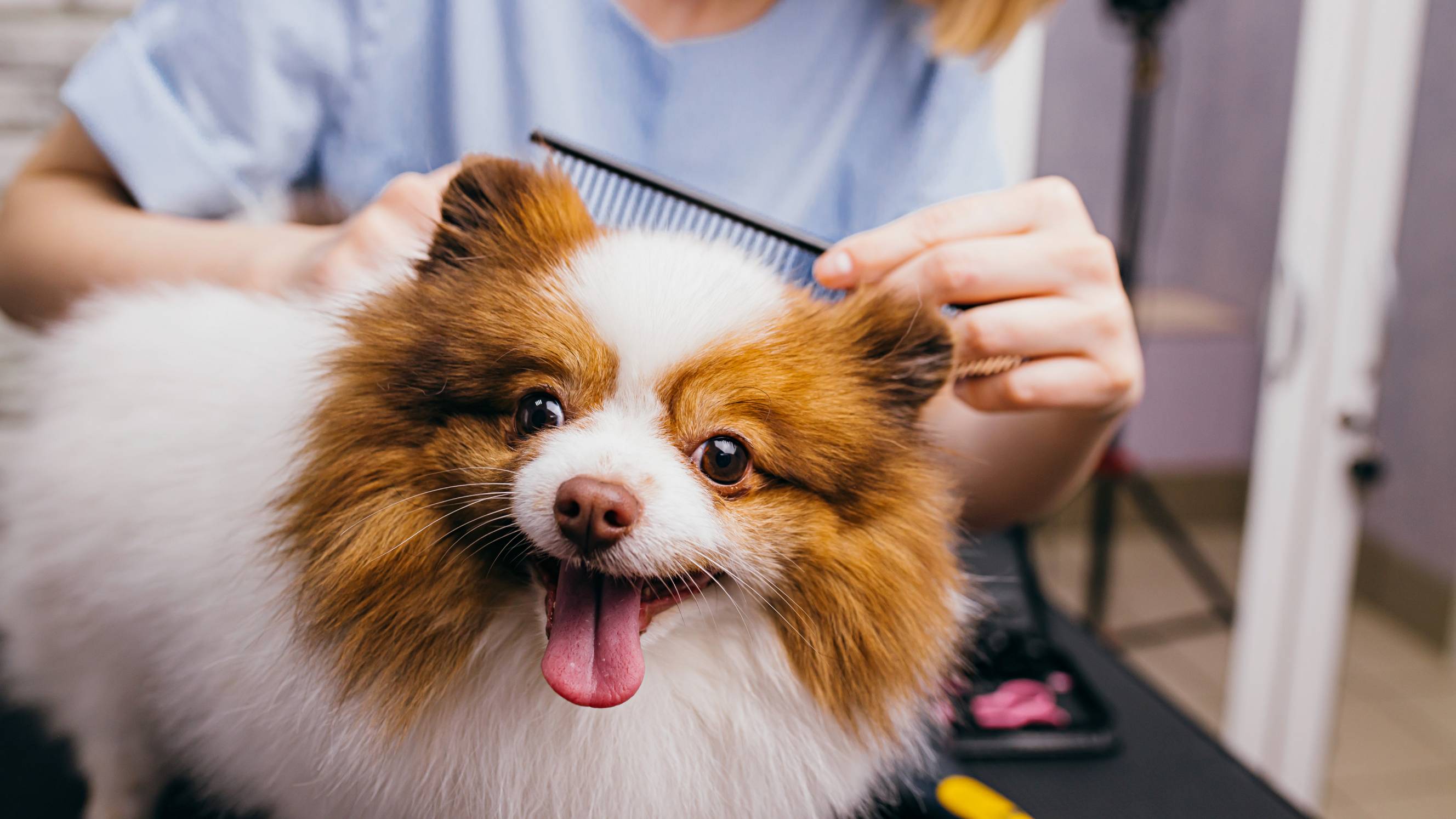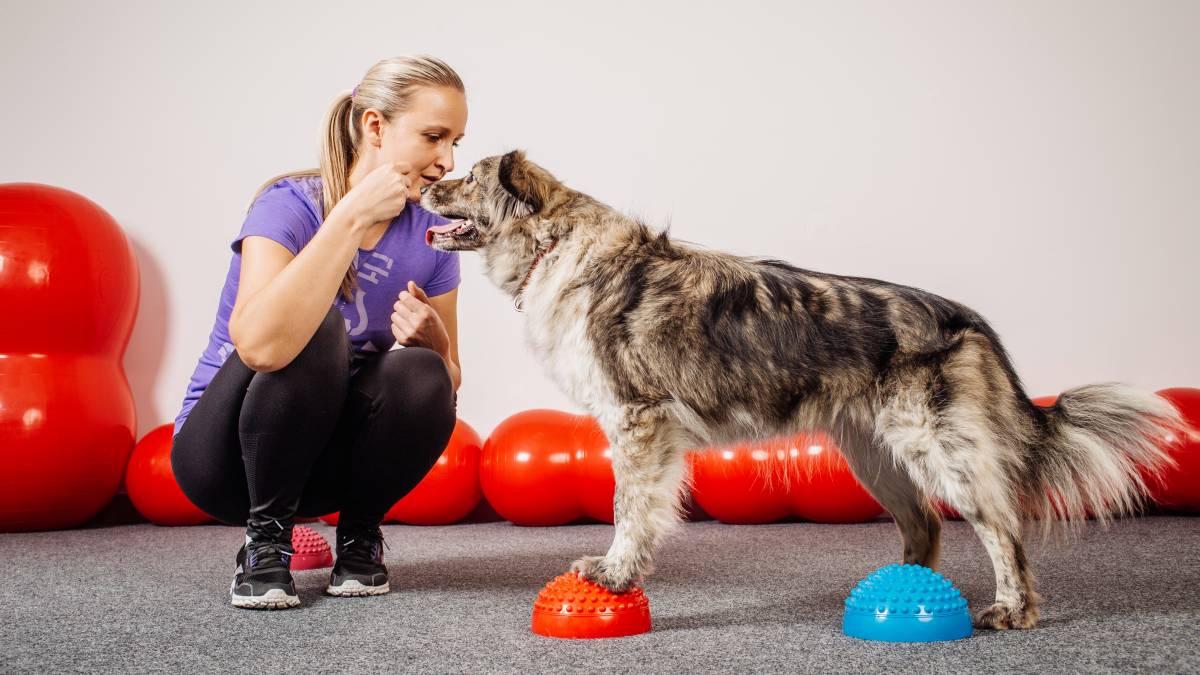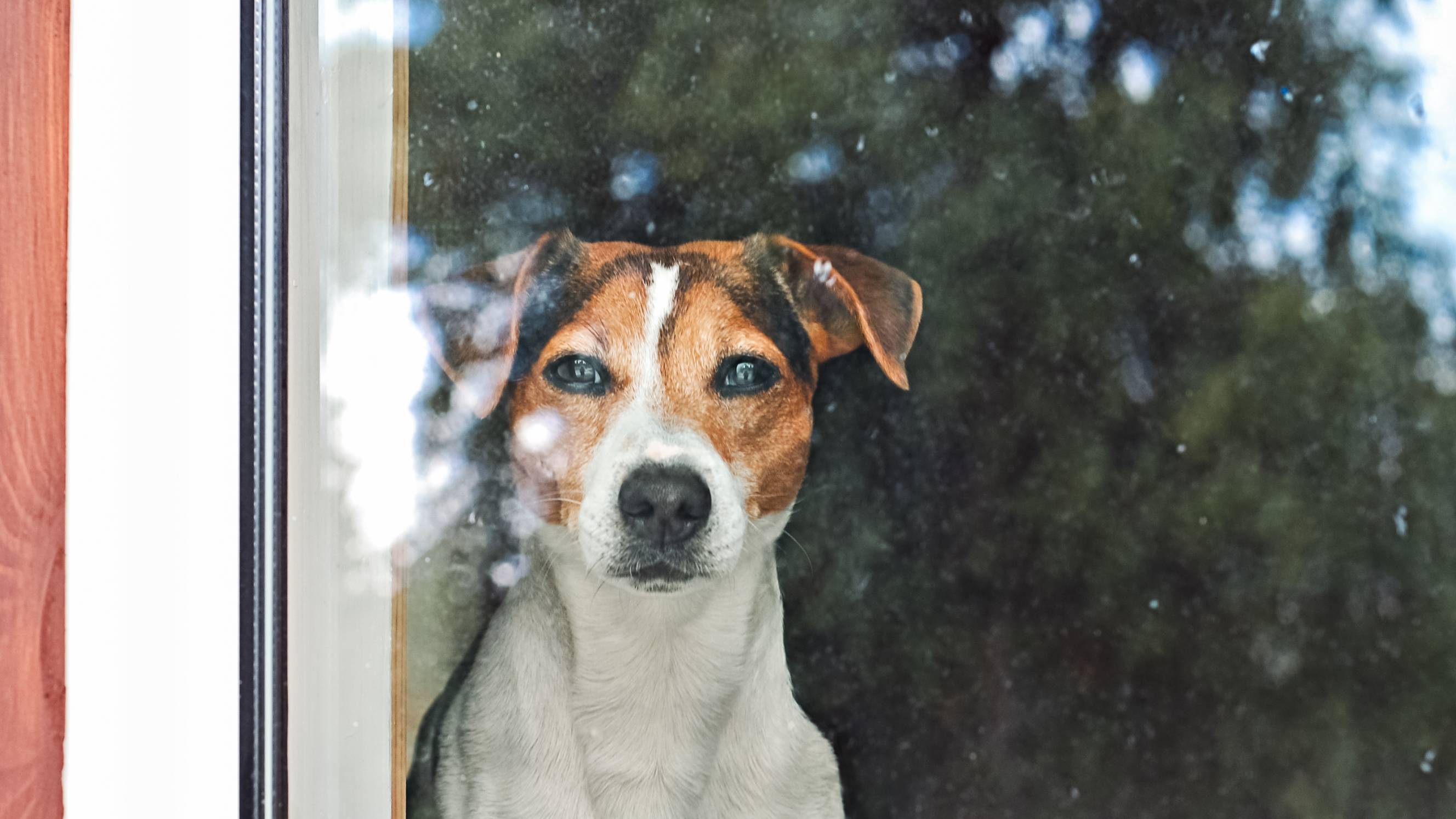- Home/
- Guides/
- Dog Training/
- Crate Training a Dog
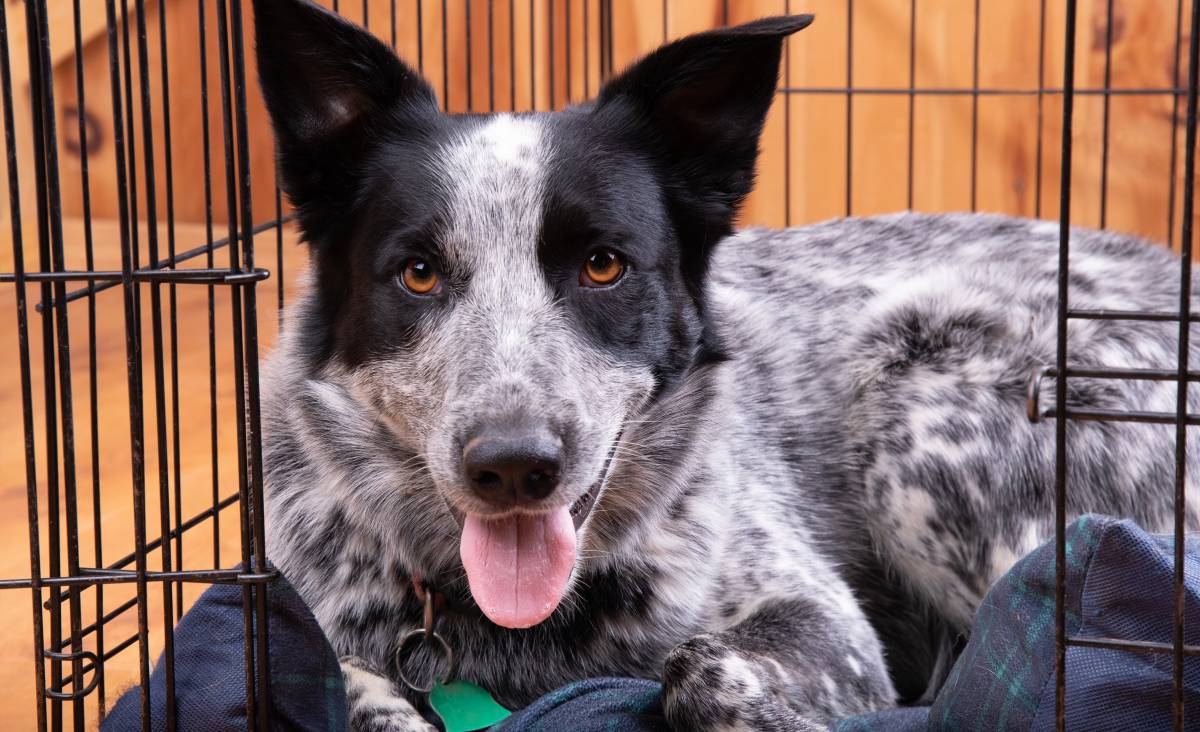
4 Steps to crate training a rescue dog
Learn how to crate train your rescue dog properly and responsibly.
Get professional dog training adviceLast Updated on
Crate training can provide a sanctuary for your rescue dog as they adjust to a new environment and cope with you going out from time to time. What’s more, a crate prevents unwanted accidents and furniture damage from an energetic and teething puppy.
Here are tips to crate training a rescue dog, from choosing proper crate size and knowing when to extend crate time.
Step 1: Choose a suitable crate for your dog.
Crates come in different sizes and designs. Make sure to choose the right crate for your dog’s size. As a general rule, the crate should provide enough room for your dog to sit, stand, and lie down comfortably. But you also don’t want the crate to be too big. Otherwise, your dog may use one end to go to the potty and the other to rest.
Extra tips:
Consider renting a crate or buying second-hand if you have a growing puppy. This way, you can keep upgrading your crate while saving costs as your dog grows.
You can get a crate specially designed for transport if you travel a lot.
Step 2: Make the crate comfortable.

A crate is not just a cage to put your dog in; It also serves as your dog’s sanctuary, and you want to make sure they don’t feel endangered or stressed when they’re inside. You can put your dog’s bed in the crate, as well as blankets, a cushion, or their favourite toy. Also, you can put in an old t-shirt or any object that smells like you to give your dog a sense of comfort and security.
Step 3: Introduce the crate to your dog.
Place the crate in a place your dog finds safe and secure. If your dog enjoys napping in the kitchen, for example, then you can put the crate there. Or, if you don’t mind, you can place the crate in your room, so your dog feels close to you as you start crate training.
Call your dog to the crate and use a friendly, excited voice. You can drop treats or even let your dog eat their meals inside the crate. Doing this can reinforce a positive experience for your dog.
Be patient. Allow some time for your dog to get used to the crate. Crate training can take a few weeks, depending on the dog’s temperament and age.

Here are steps you can do when crate training a rescue dog.
Call your dog to the crate and reward them with a treat once they enter.
Praise your dog and close the crate.
Sit next to the crate quietly for a minute or two.
Go into another room and leave your dog in the crate for about five to 10 minutes.
After a while, come back, unlock the crate, and let your dog out.
Praise your dog and give them a treat as well, so they feel rewarded from the experience.
Crate training dos and don’ts
Never yell at or scold your dog if they whine while in the crate. Instead, calmly ignore your dog until the whining stops.
Whenever your dog whines, you’ll have to make a judgement call: Is your dog whining to make you let them out or to go to the potty?
If it’s the former, letting them out too soon won’t give your dog enough time to get acclimated to the crate.
If your dog needs to go to the potty, let them out. Regular potty breaks, stretching time, and socialising are essential.
Step 4: Gradually increase crate time.
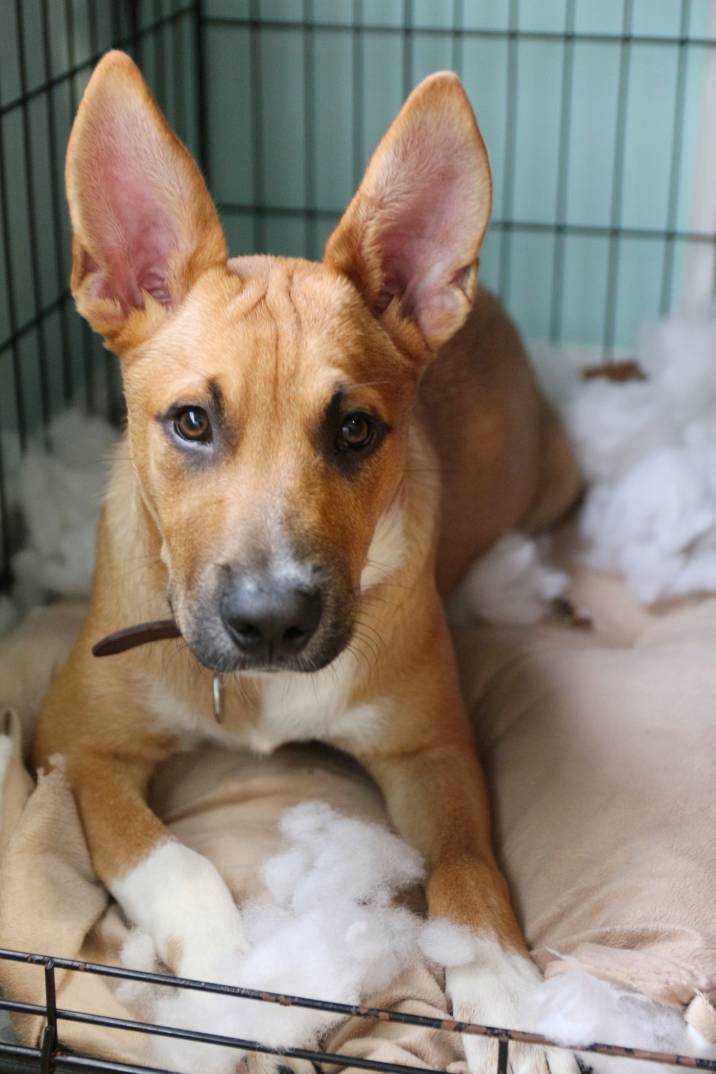
You can train your dog to stay in the crate for longer periods once they get used to it. Try increasing the crate time to 30 minutes or longer once your dog is fine with staying in its crate for up to 10 minutes.
Eventually, you can try crating your dog overnight to keep them from wandering off at night. Place the crate in your bedroom or the hallway next to your bedroom door can be helpful. Bear in mind that dogs are social, and isolating them entirely in another room might make them feel anxious.
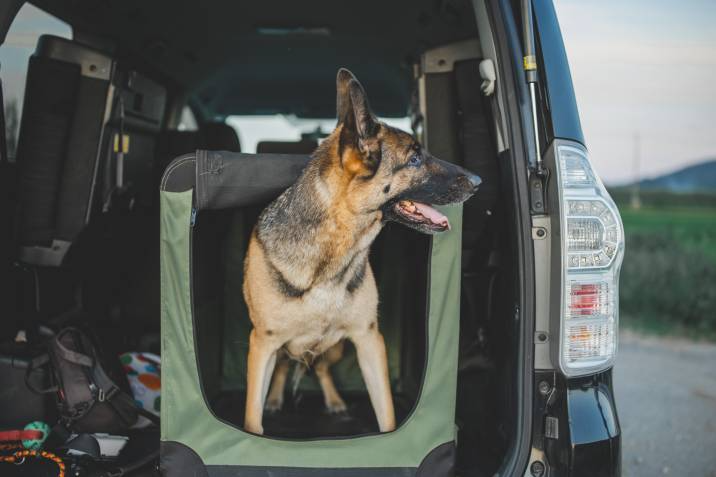
If you plan to use the crate when driving or travelling, you can also put the crate in your car sometimes.
Encourage your dog to enter the crate when you’re in the car.
Drive around for a few minutes or bring your dog to a happy place like the park or beach before driving back home.
Putting your dog in the crate only when you go to the vet or anywhere unpleasant can upset your dog and make them anxious about the crate.
Crate mindfully and consider alternatives.
Every dog is different, and crate training may not work for every dog and pet owner. Some dogs come to love their crate and rest in it even with the door open. But some dogs are anxious in nature and feel miserable in a crate.
In case of the latter, consider other options like a pet sitter or doggy day care. Make sure to find professionals who know how to work with your dog’s temperament.
| You might also like: 25 Dog fence ideas for indoors and outdoors |
Not quite sure if crate training is right for your dog, or do you need some expert advice on how to go about training? Get in touch with local dog trainers by posting a task on Airtasker.
FAQs on crate training a dog
It’s best to crate train your anxious dog while you’re at home. Your dog is likely to feel anxious about staying in the crate if you only put them there whenever you leave the house for work or errands. As much as possible, crate train your dog when you’re around and in your dog’s field of vision. This way, you can ease your dog’s separation anxiety, and they’ll feel comfortable inside the crate.
You can crate train an adult dog by doing the same steps above. If your dog is not treat-motivated, try rewarding them with lots of praise and encouragement. Also, let your dog out immediately if they panics soon after you crate them. You may have to avoid keeping your pet in the crate for too long, as senior dogs can have weak bladders and need to go more often.
Crate training an older dog can be particularly challenging, especially since senior dogs tend to already have habits that are hard to break. Be patient and remember that crate training an older dog can take a few weeks up to a few months.
Crate training is one way to keep your dog from doing unsafe or undesirable behaviour when they’re alone. In a way, a crate can function as sort of a babysitter if you can’t always afford a pet sitter or dog day care. What’s more, a crate can keep your dog away from rowdy children or aggressive dogs. A crate can also be a safe haven for rescue dogs recovering from injury or surgery.
Adult dogs should not be in a crate for more than 8 hours at a time, according to Adopt-a-Pet.com. But crate time should be much shorter for older dogs and puppies because they need more frequent potty breaks. Regardless, a dog should not spend most of their time in a crate, as dogs naturally need to be around their humans. Long-term confinement is harmful to dogs’ health and well-being.
Find dog trainers, fast
Find a Dog Trainer
Related articles

How to become a dog trainer
Read more
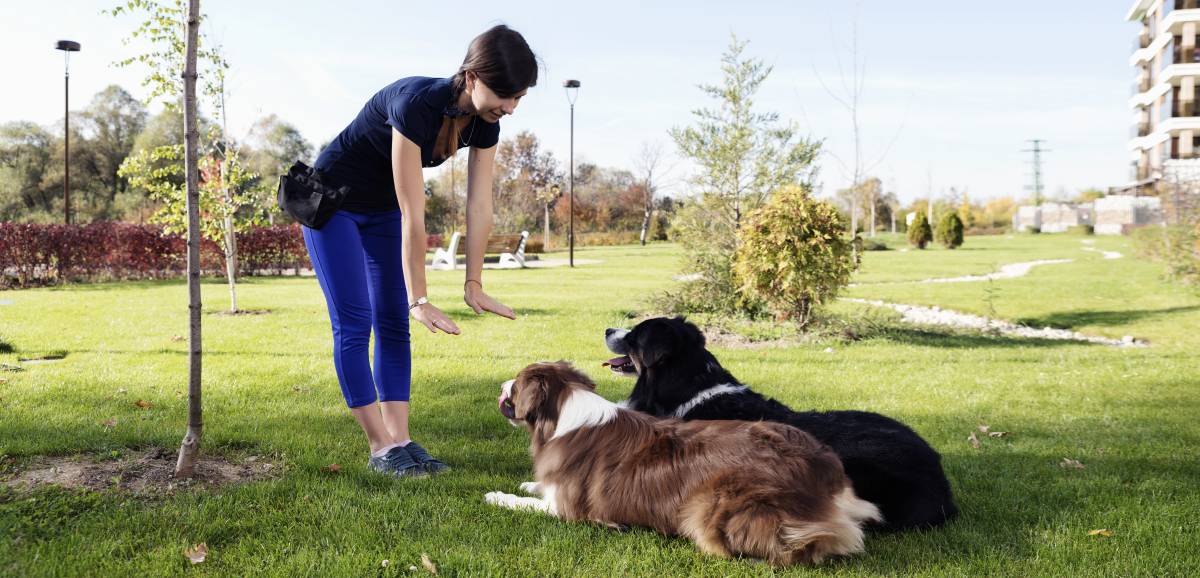
Dog training 101: How to train your dog
Read more
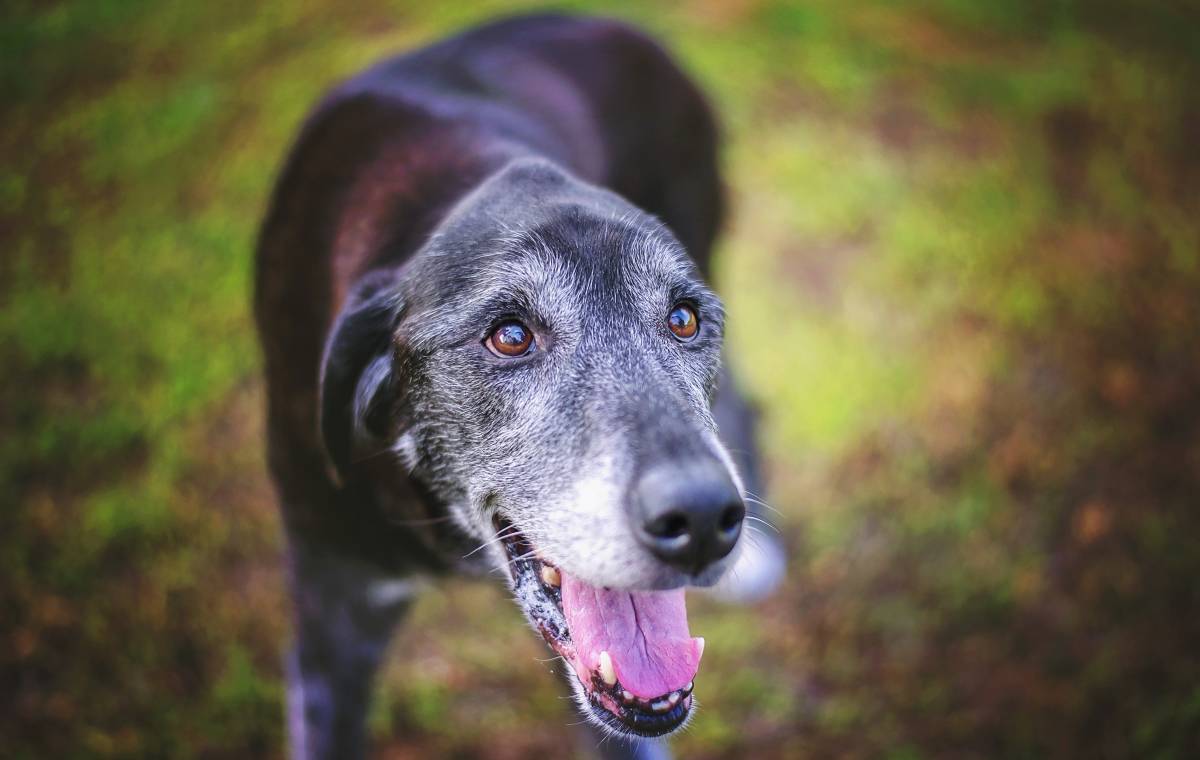
Tips for training an older dog
Read more
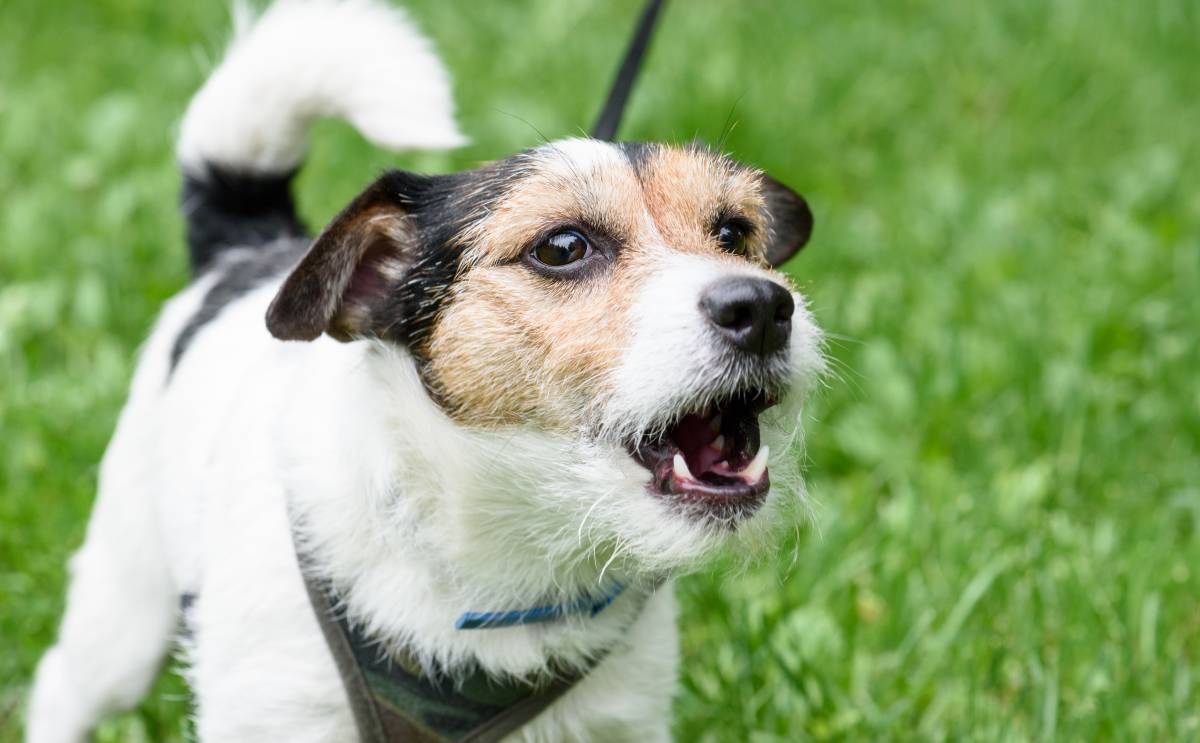
Reactive dog training tips
Read more

Your ultimate guide to dog care
Read more
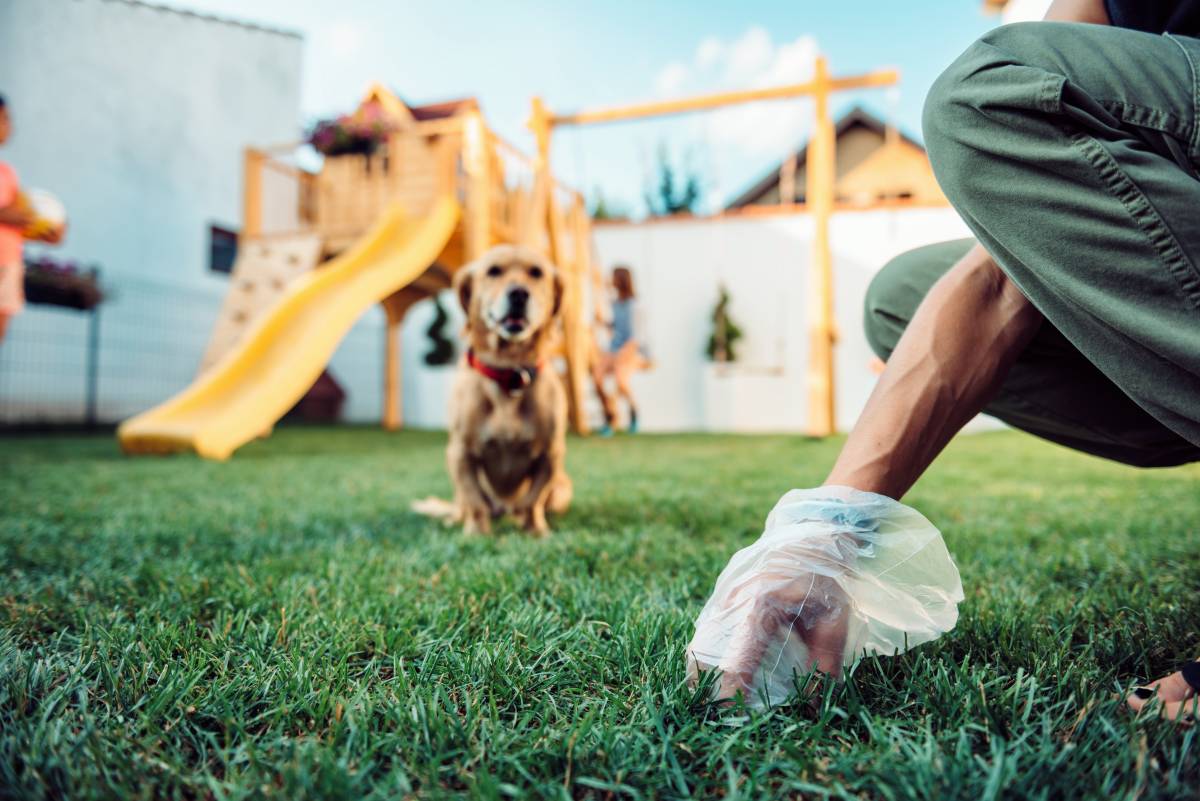
3 Effective ways to house train a dog
Read more
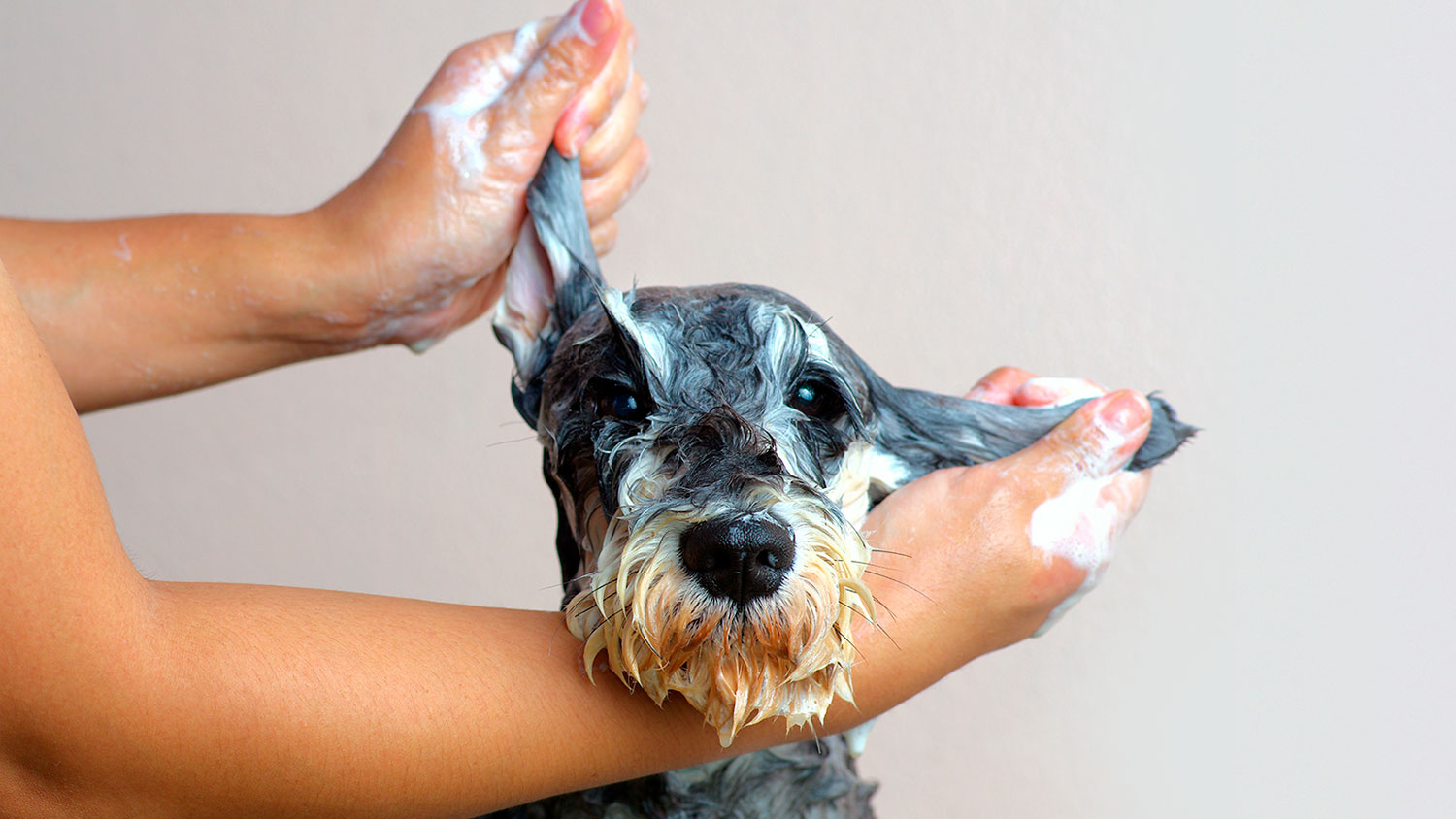
How to bathe your dog like a groomer
Read more
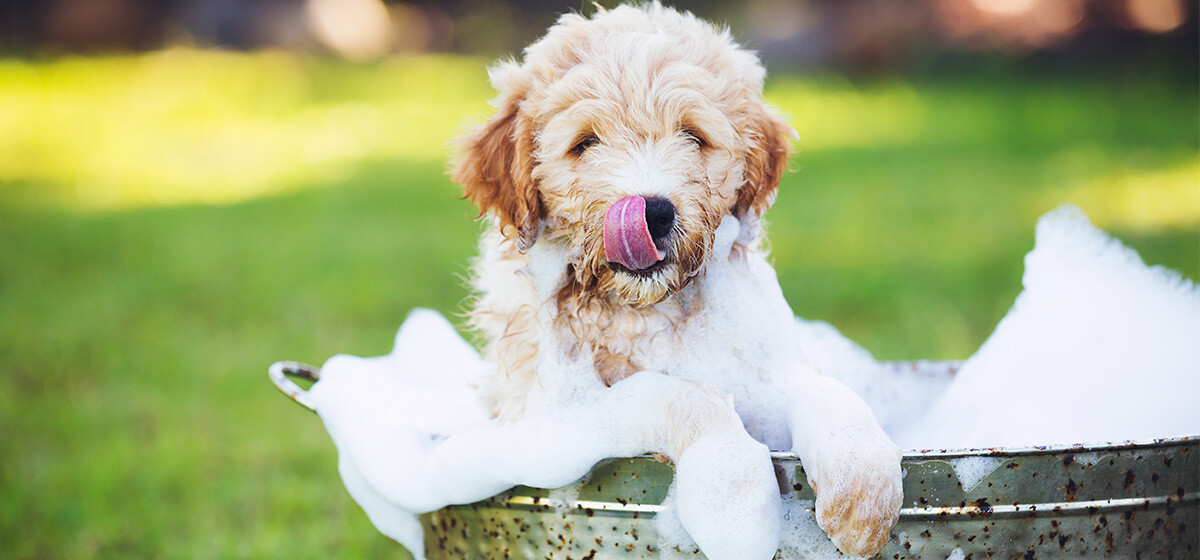
How often should you wash your dog
Read more

How to groom a dog at home
Read more

How to groom a long-haired dog
Read more
Related price guides

How much does dog day care cost?
Read more
